Little hands look their best holding toys and books, but unfortunately, not every child is blessed with a clean and carefree childhood. Millions of children worldwide are victims of child labor, toiling hard for 14-16 hours every single day, in exchange for a few pennies. While child labor exists in varied industries, the garment manufacturing sector has been a point of concern for several international child rights organizations. And why not? Child labor in the fast fashion world consists of children working in almost every step of the supply chain: from cultivating cotton seeds to harvesting cotton balls, spinning yarn, dyeing and participating in various stages of garment production in factories throughout the globe.
The ILO has defined child labor as, “work that deprives children of their childhood, their potential and their dignity, and that is harmful to physical and mental development. It refers to work that is mentally, physically, socially or morally dangerous and harmful to children; and/or interferes with their schooling.” But multinational corporations don’t seem to bother. Because the only thing that matters to large fast fashion brands is to mill in pools of profits. No matter what or who’s at stake!
- Child Labor in Fast Fashion: Understanding the Gravity
- What is Child Labor?
- Why Do Fast Fashion Companies Utilize Child Labor?
- To Cut Production Costs
- Source of Income for the Underprivileged
- Flexibility & Agility in the Production Process
- Insufficient Legal Enforcement Mechanisms
- Complex Global Supply Chains
- Prevalence of Child Labor in the Fashion Industry
- Children’s Rights and the Role of Organizations
- Impact on Children Involved in Child Labor
- Societal Challenges in Combating Child Labor
- What Can be Done to Steer Clear of Child Labor?
- What Can Fashion Industry Do to Avoid Using Child Labor?
- What Can Consumers Do to Curb the Menace of Child Labor?
- Concluding Thoughts…
Child Labor in Fast Fashion: Understanding the Gravity
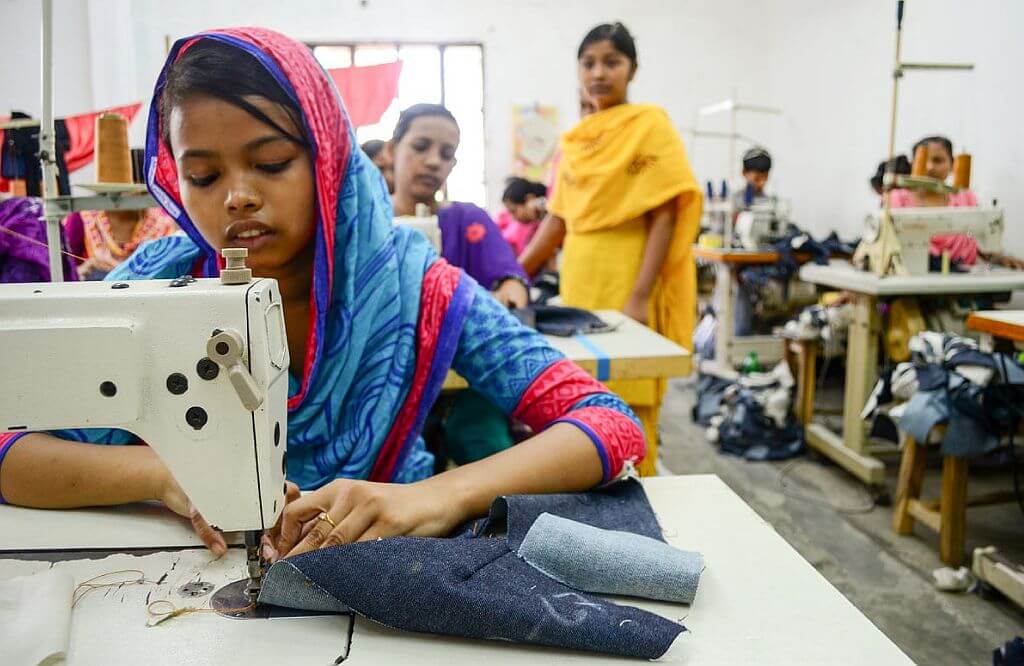
What is Child Labor?
Child labor refers to the employment of children in any form of work that deprives them of their childhood, interferes with their ability to attend regular schools, and is mentally, physically, socially, or morally harmful. It is a violation of children’s rights and often perpetuates a cycle of poverty with limited future opportunities.
Child labor can be categorized into two main types: Hazardous and Non-hazardous.
- Hazardous Child Labor: It involves work that is dangerous to a child’s physical and mental well-being. The nature of these tasks often exposes them to unsafe working conditions with high-risk materials at use and practices that may harm their health or development. Examples of hazardous child labor include working in mines, garment production factories, handling chemicals in leather tanneries, synthetic fibers production units, and so on.
- Non-hazardous Child Labor: It constitutes of work that is not necessarily dangerous but still interferes with a child’s education and development. While not directly posing immediate physical harm, it deprives children of their right to education and normal childhood activities. Some common types of non-hazardous child labor can be found in various industries, including garment factory, agriculture, domestic work and other informal service sectors.
In the garment industry, there is a disturbing practice of employing children in exploitative working conditions. These young individuals are tasked with various labor-intensive jobs such as beading, sewing buttons, trimming loose threads, cutting fabrics, and assembling garments. Unfortunately, these minors are subjected to long working hours, low wages, and inadequate safety measures, effectively creating environments akin to sweatshops. It is disheartening to witness the use of child labor and the existence of companies that resort to such practices.
Cotton production is another area where child labor is a widespread practice. As one of the world’s most cultivated crops, cotton serves as a crucial raw material for textile production. But cotton harvest involves long hours of laborious work in harsh conditions. And hiring children turn out to be really effective as their little fingers tend to cause less damage to the cotton balls while picking. No wonder, 71% of child labor exists in agriculture, with cotton harvest as a major category.
Why Do Fast Fashion Companies Utilize Child Labor?
Child labor in the fashion industry has been a pressing issue worldwide. The prospect of employing children as a form of cheap labor pushes companies to outsource production to developing countries where labor rights are, let’s say, non-existent. And employers can easily escape without taking responsibility because of the complexity of the fashion supply chain. The global campaign coordinator of Stop Child Labour, Sofia Ovaa, said, “There is no supervision or social control mechanisms, no unions that can help them to bargain for better working conditions. These are very low-skilled workers without a voice, so they are easy targets.” Some reasons why fast fashion and child labor seem to be reciprocal are:
To Cut Production Costs
Child labor allows fast fashion companies to cut down on production costs. Children are often trapped to work for lower wages compared to adult workers who expect a decent minimum wage, which consequently helps these brands to maximize their profit margins. While this approach forces children into child labour, it ultimately results in adult unemployment.
Source of Income for the Underprivileged
In certain regions, particularly in developing countries, child workers act as a source of income for underprivileged communities. Fast fashion companies take advantage of this availability of cheap labor to meet the demand for low-cost production. This sector exploits such communities with limited economic opportunities, where child labor becomes a means of survival for families in extreme poverty. Lack of education and job opportunities further make these sections of vulnerable people more susceptible to child labor practices.
Flexibility & Agility in the Production Process
Child labor can offer flexibility and agility in production processes. Children are often more adaptable to long working hours and repetitive tasks, allowing garment factories to meet tight production deadlines and respond swiftly to market demands.
Insufficient Legal Enforcement Mechanisms
Most developing countries have weak labor laws, and insufficient legal enforcement mechanisms fail to deter fast fashion brands from engaging in child labor. These companies get easy access to child workers and take advantage of this regulatory gap without facing significant consequences or scrutiny.
Complex Global Supply Chains
The global supply chains of fast fashion brands can be complex, involving multiple intermediaries and subcontractors. This complexity can make it challenging for companies to trace the origins of their products, and effectively monitor labor conditions, making it easier for the involvement of child labor to go undetected.
Prevalence of Child Labor in the Fashion Industry
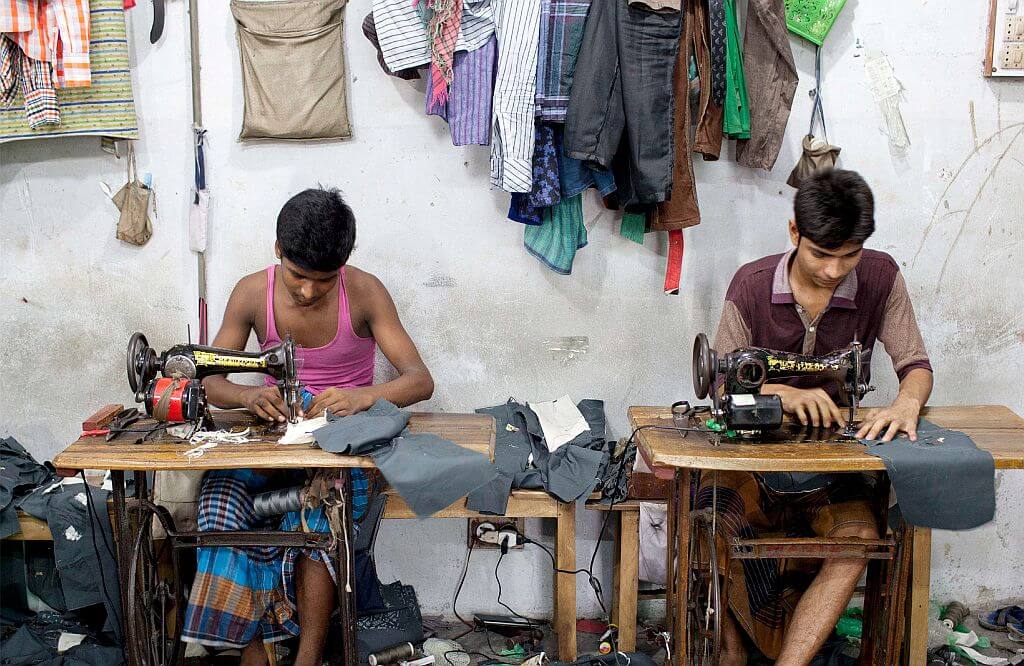
Child labor in clothing industry has been prevalent for decades, despite global efforts to eliminate it. What’s depressing is obtaining accurate statistics on child labor in this sector is challenging due to its hidden nature, limitations in monitoring systems, and lack of transparency in supply chains. However, data from reputable sources such as the International Labour Organization (ILO), UNICEF, and other relevant organizations shed light on the scale of the problem to a great extent. Hold your heart, because this might be triggering!
1. According to the ILO, approximately 160 million children worldwide are engaged in child labor, with a significant number involved in the production of garments and textiles alone. However, it is important to note that these figures represent estimates based on reported incidents and surveys. So there is every chance that the true extent of child labor in the fashion industry may be even higher.
2. Majority of the developing countries have a higher incidence of child labor in the fashion industry. Nations such as Bangladesh, China, India, Pakistan, and Myanmar are found to be associated with alarming rates of child workers in garment production. These countries, which are major hubs for textile manufacturing, face challenges in enforcing strong labor regulations and ensuring the protection of minors.
3. A multitude of clothing companies have been associated with utilizing child labor in their supply chains. However, it is crucial to approach such information with caution due to the complexity of supply chain networks. Notorious cases in the past have involved multinational fast fashion brands, like Primark, Nike, Adidas, and more, drawing attention to the urgent need for increased transparency and responsible sourcing practices.
4. The cotton industry is considered to engage in the worst forms of child labour. In direct violation of the universally ratified ILO Convention, 182 on the Worst Forms of Child Labor, children working in cotton production are subjected to a range of detrimental conditions. They remain exposed to harmful pesticides, work in fields at high temperatures for long hours, and face risks from insects and other animals. Uzbekistan’s cotton agriculture sector has been infamously making minors as young as 8-year-olds work in cotton harvesting.
5. Over 29.8 million individuals are trapped in modern slavery, where adults, facing the struggle to make ends meet with their meager wages, often feel compelled to resort to involving their children in slave labor within the fashion industry.
The hidden nature of child labor, subcontracting practices, and limited tracking and reporting systems make it difficult to capture the full extent of the problem. Additionally, the fast-paced nature of the fashion industry, with its constant demand for new collections and tight production deadlines, adds complexity to monitoring child labor practices effectively.
To gain a comprehensive understanding of the extent of child labor in the fashion industry, increased transparency and research are essential. This includes enhancing supply chain traceability, promoting ethical sourcing practices, and engaging in collaborative efforts among governments, organizations, and companies to address child labor effectively. Only through concerted action and a commitment to transparency can the fashion industry make significant progress in eradicating child labor and ensuring the protection of children’s rights.
Children’s Rights and the Role of Organizations
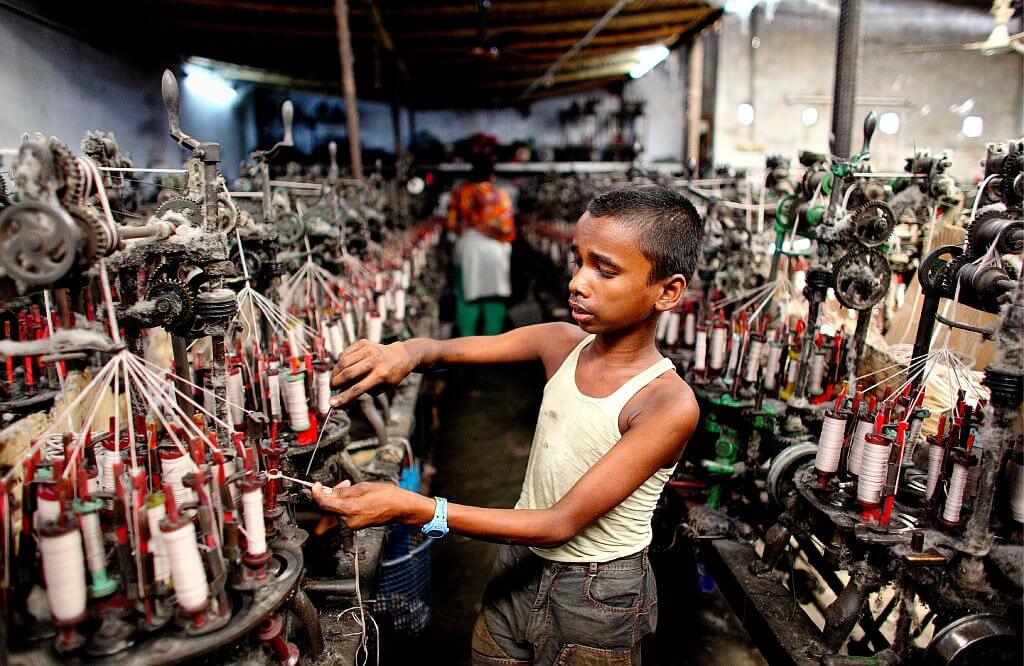
Children under the age of 18 have fundamental child rights that are intended to provide freedoms and protections to every child, regardless of their social, economic, or cultural background. These rights include the right to education, protection from exploitation and abuse, access to healthcare, and the right to grow up in a safe and nurturing environment.
International humanitarian organizations such as the United Nations Children’s Fund (UNICEF) and the International Labor Organization (ILO) are all set out to eradicate every form of child labor at a global level. Both these institutions recognize that child labor is a violation of children’s rights and a barrier to their development.
1. UNICEF: This recognized organization is dedicated to advocating for children’s rights, providing assistance to children in need, and promoting policies that prioritize their well-being. UNICEF works to combat child labor through various programs and initiatives, focusing on education, awareness campaigns, capacity building, and social protection measures. They collaborate with governments, civil society, and other stakeholders to create child-friendly policies and establish legal frameworks to curb child labor.
2. ILO: This is a specialized agency of the United Nations that focuses on labor-related issues, including the strict measures on child labor laws. The organization has adopted conventions and standards, such as the ILO Convention No. 182 on the Worst Forms of Child Labour, which calls for immediate action to eliminate hazardous child labor. Through conventions, programs, and technical assistance, the ILO works with governments, employers’ and workers’ organizations to develop comprehensive strategies and policies for the prevention of child labor.
Besides the UNICEF and ILO, two other non-profit organizations working towards the prohibition of child labour and upholding children’s rights are The Child Labor Coalition (CLC) in the U.S. and The Action Against Child Exploitation (ACE) in Japan. Together, their joint efforts rescue and rehabilitate child labourers, and create an environment where children can enjoy their rights and reach their full potential.
Impact on Children Involved in Child Labor
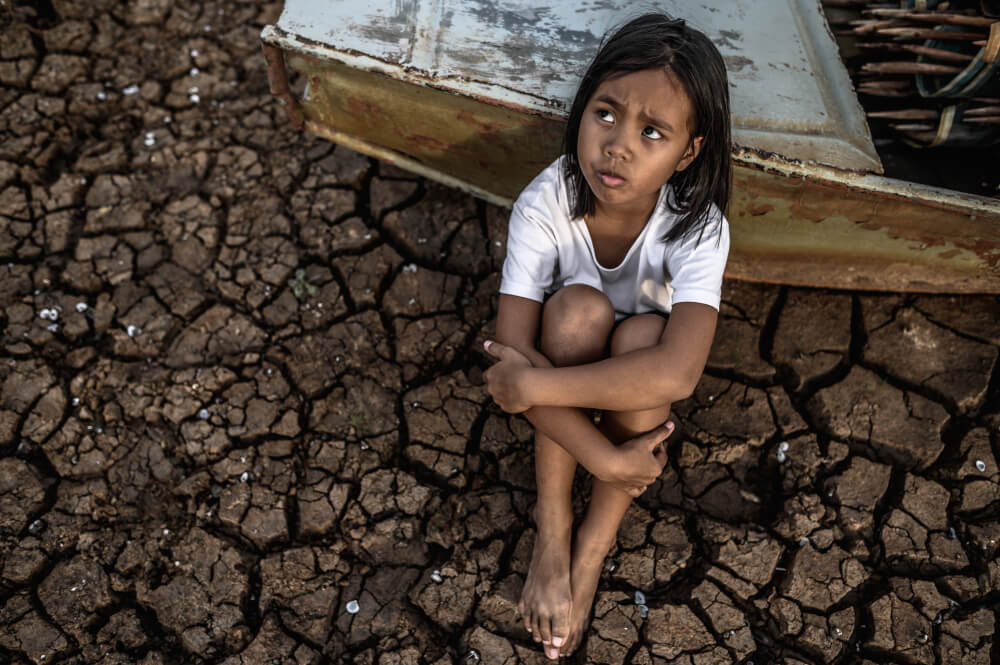
Child labor has detrimental effects on children, both physically and psychologically. In terms of physical effects, minors are subjected to uncertain working conditions, resulting in physical injuries, accidents, health risks, and stunted growth. They may experience respiratory problems from exposure to harmful substances, injuries from operating machinery, and musculoskeletal issues from repetitive tasks.
Again, garment and textile factories generate enormous amounts of wastewater and greenhouse gas emissions. Therefore, the mental and physical health of children working in such fast fashion supply chains have every chance to be drastically affected.
Furthermore, working long hours in strenuous conditions leaves little time for proper nutrition, resulting in malnutrition and improper growth. Insufficient food intake can impair their physical development and weaken their immune systems. This can lead to chronic fatigue, exhaustion, and physical stress, negatively impacting their overall health.
As far as psychological effects are concerned, child laborers are exposed to stressful and exploitative environments, leading to psychological trauma. They may experience anxiety, depression, and post-traumatic stress disorder (PTSD) due to harsh working conditions. The picture gets worse with verbal and physical abuse, along with a lack of emotional support. Moreover, child labor deprives children of education, contributing to feelings of frustration, hopelessness, and low self-esteem. This lack of education puts an end to their chance of a better life, binding them to the vicious cycle of poverty.
Overall, child labor disrupts the normal physical, emotional, and cognitive development of children. It hampers their ability to develop essential life skills, critical thinking abilities, and emotional resilience, which are crucial for their all-inclusive well-being.
Societal Challenges in Combating Child Labor
Combatting child labor is a complex task due to various societal challenges. Economic, social, and cultural factors contribute to the persistence of child labor:
Economic Factors
- Poverty: Economic deprivation and lack of alternatives force families to rely on their children as a means of survival because wages earned by them cover a significant portion of their household income.
- Informal Economy: Child labor is prevalent in the informal sector, where regulation and enforcement bodies are lax. This system makes it difficult to monitor and prohibit such exploitative practices.
- Demand for Cheap Labor: Industries seeking low-cost production and fast turnaround times create a demand for cheap labor, leading to the exploitation of child workers.
Social Factors
- Inadequate Social Protection Systems: Weak civil protection systems fail to provide sufficient support to vulnerable families, leaving them with limited resources and pushing children into labor.
- Social norms: Deep-rooted social norms, such as gender biases or cultural acceptance of child labor, can fuel the practice and hinder efforts to eradicate it. Discrimination against girls often results in their disproportionate involvement in child labor. Traditional gender roles and biases further pitch into their exploitation in domestic work, agriculture, and other sectors.
Cultural Factors
- Traditional Practices: In some communities, child labor may be deeply ingrained in cultural traditions and perceived as a necessary part of a child’s development or skill-building.
- Migrant and Informal Labor: Migration patterns, particularly within vulnerable communities, like gypsies and refugees, can expose children to exploitative labor practices, as their families may lack legal protections and access to social services.
Legal Factors & Enforcement Challenges
Legal factors and enforcement challenges further impede the eradication of child labor. This includes issues like:
- Weak Legislations: Inadequate or ambiguous laws related to child labor create loopholes, making it difficult to hold violators accountable and enforce strict penalties.
- Lack of Resources: Insufficient funding, trained personnel, and infrastructure hinder the effective implementation and monitoring of child labor laws.
- Corruption: Widespread corruption within law enforcement agencies can undermine efforts to combat child labor, as it allows employers to evade prosecution and continue exploiting children.
What Can be Done to Steer Clear of Child Labor?
Companies should foster transparency in the supply chain by mapping and monitoring each stage of production. They should implement responsible sourcing practices and work with suppliers who uphold ethical labor standards. Next, they can encourage manufacturers to obtain certification from recognized organizations such as Fair Trade Certified, Bluesign, Fair Wear Foundation and more that verify ethical practices. Also, businesses can support educational initiatives and community development programs that empower families and provide alternatives to child labor. They can invest in vocational training programs to enhance employment opportunities for adults.
Over 130 brands have joined the Fair Wear Foundation, pledging their commitment to a code of labor practices that strictly prohibits child labor. These accredited brands go beyond internal policies by conducting regular audits to ensure all suppliers involved in the cut-make-trim stage of production meet these stringent standards. This expansive approach sets them apart from most companies, highlighting their dedication to eradicating child labor in the fashion industry.
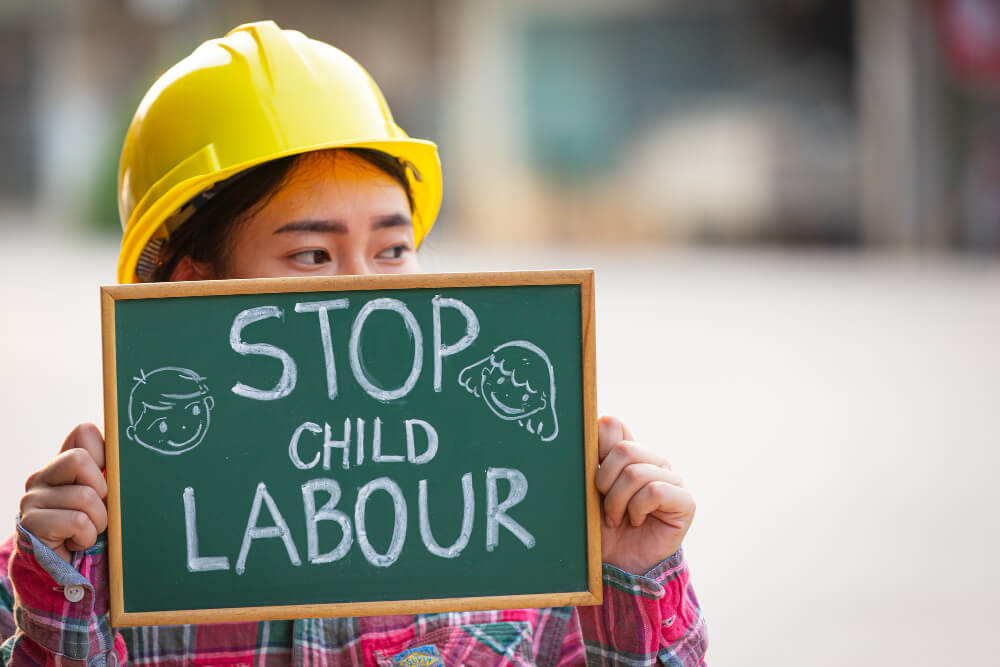
What Can Fashion Industry Do to Avoid Using Child Labor?
Lotte Schuurman of the Fair Wear Foundation says, “Brands can start off by creating a supply register. Fashion brands normally have 200 or more suppliers. You should start by knowing who your manufacturers are and visiting them.”
So you see, the fashion industry is actually capable of avoiding child labor and conducting operations more responsibly, if it really wants to. Some guidelines that this sector can take are:
- Executing strict measures to trace the origin of materials and labor. Brands can verify transparency throughout their supply chain, making it easier to identify and address any instances of child labor.
- Conducting frequent audits and inspections of suppliers help guarantees compliance with labor standards. This includes making sure that no child labor is employed in the production process.
- Establishing and enforcing a robust code of conduct that explicitly prohibits the use of child labor is crucial. This acts as clear guidelines for manufacturers and holds them accountable for their labor management.
- Collaborating with reputable organizations and initiatives dedicated to eradicating child labor allows brands to leverage their expertise and resources. These partnerships can help develop effective strategies and share the best business ethics.
- Training programs, manpower handling and capacity-building initiatives for suppliers support them in developing the necessary skills and knowledge to meet ethical labor standards. This empowers them to create safer working environments.
- Supporting fair trade practices and ensuring fair living wages for workers across the supply chain promotes ethical labor practices and reduces the likelihood of child labor exploitation.
- Engaging in partnerships with local communities enables the promotion of education and the protection of children’s rights. By working closely with communities, brands can actively contribute to improving the welfare of children and families.
- Prioritizing responsible sourcing, which includes selecting certified fair trade suppliers who adhere to strict labor prototypes. This assures that the products are produced ethically, without the use of child labor.
- Fashion brands should communicate their efforts to eliminate child labor to consumers. This clarity builds trust and allows consumers to make informed choices, supporting labels that prioritize ethical labor practices.
- Lastly, clothing companies can use their influence to advocate for stronger legislation and industry regulations aimed at addressing child labor. By actively participating in policy discussions, they can contribute to systemic change and create a more ethical fashion industry.
What Can Consumers Do to Curb the Menace of Child Labor?
While the entire fashion industry and governments play a huge role in fixing this ever-lasting issue of child labor, as consumers, we have a duty to stand against this practice and safeguard the childhoods of every child on Earth. Some of our actions that will really prove fruitful are:
- Everyone should educate themselves about companies’ labor practices and support fair trade brands that demonstrate a commitment to ethical sourcing and fair labor.
- Choosing products with fair trade or responsible manufacturing certifications and labels guarantees that the items have been produced under ethical labor conditions.
- Prioritizing quality over quantity and opting for sustainable clothing brands helps reduce the demand for fast fashion and supports brands that prioritize responsible practices.
- Always research brands to find those with transparent supply chains and strict labor standards. Supporting such businesses encourages transparency and an accountable attitude.
- If you are informed enough, then try raising awareness about child labor among your friends, family,neighbourhood, and communities. Advocating for fair labor practices can actively contribute to the movement for ethical fashion.
- Backing initiatives and campaigns that promote ethical fashion is a great idea to spread knowledge about child labor, which is important to drive change within the industry.
- Opting for second-hand or vintage clothing offers an alternative to supporting the fast fashion industry and can be a sustainable choice.
- Consumers can encourage brands to disclose information about their supply chains and child labor policies. This promotes accountability and encourages brands to improve their practices.
- If you come across brands that doesn’t disclose information about its factories, then directly reach out to them to express your concerns about labor practices and demand answers. This sends a clear message that ethical practices matter to consumers.
- Staying informed about legislation related to child labor and supporting organizations actively working to combat child labor in the fashion industry can have a collective impact on driving change.
Concluding Thoughts…
Despite the daunting reality, there has been notable progress in combatting child labor. Since 2000, the number of children engaged in child labor has decreased by one-third, dropping from 246 million to 160 million children. Among them, approximately 79 million are involved in hazardous work, another significant decline from 170 million in 2000. Yes, it’s not enough! But these stats are a glimmer of hope that if corporations, governments, social bodies and consumers unite, child labor can be wiped out.
Let’s empower children and break the chains of child labor!







